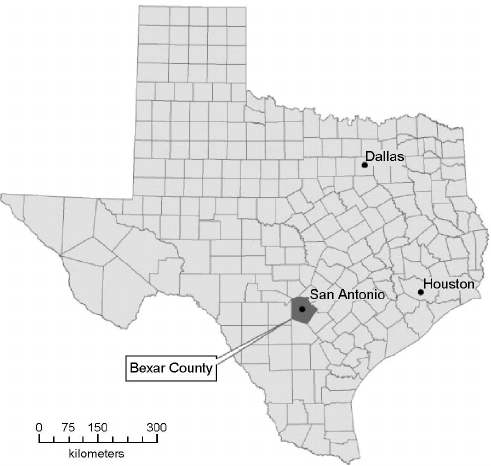Introducing the Living Spider That Has Vanished…
Officially declared extinct, the Braken Bat Cave meshweaver spider has seemingly disappeared from existence. However, this intriguing species can still be spotted in specific regions of Texas, known now as the Madla Cave meshweaver.
Delve into the captivating world of this endangered spider.
Braken Bat Cave – Not Solely for Bats
The Braken Bat Cave meshweaver spider, scientifically known as Circurina venii, was a member of the Circurina genus. It inhabited only two caves located in the western part of Bexar County, Texas.
Arachnologist Willis J. Gertsch made the discovery of this species in 1992. Its rarity led to its inclusion in the Federal List of Endangered and Threatened Wildlife. However, everything took an unexpected turn during the summer of 2022.

The USA Fish and Wildlife Service (USFWA) made an announcement on August 23rd, 2022, stating that the Braken Bat Cave meshweaver spider would be removed from the Federal List of Endangered and Threatened Wildlife. However, this decision was not because the spider was no longer endangered, but rather because it was no longer recognized as a distinct species. Research had revealed that the Braken Bat Cave meshweaver spider was actually the same species as the Madla Cave meshweaver spider (Circurina madla), leading to this reclassification.
Although the Braken Bat Cave meshweaver spider no longer exists as a separate species, it has now become part of the existing population of Madla Cave meshweaver spiders, albeit under a different name. Despite this change, the critical habitat of the Braken Bat Cave meshweaver spider remains protected. This is because the habitat is home to another endangered species, a small beetle known as Rhadine infernalis.

Interestingly, the status of the Madla Cave meshweaver spider on the Federal List of Endangered and Threatened Wildlife has not been altered. This is due to the fact that the spider is already recognized as an endangered species under the Endangered Species Act of 1973.
Madla Cave Meshweaver Spider
The Madla Cave meshweaver spider is a small arachnid that resides exclusively in about eight to nine caves located in Bexar County, Texas. It has a cream-colored body and measures approximately 4.8 to 6.7 mm (0.19 to 0.26 inches) in length.
Due to its life in the underground, the Madla Cave meshweaver spider does not possess functional eyes. This loss of vision is a common trait among troglobites, which are species adapted to living in underground environments like caves.
Belonging to the genus Cicurina, the Madla Cave meshweaver is one of 140 spiders classified as cave meshweavers. These spiders are part of the Hahniidae family, which includes dwarf sheet spiders.

the Madla Cave meshweaver and other dwarf sheet spiders have a unique way of building their webs. These spiders use their spinnerets, located at the back of their bodies, to produce incredibly fine silk. What sets them apart is that they have six spinnerets arranged in a row, with the outermost ones being longer than the rest. If you’re interested in learning more about arachnids, there are plenty of resources available to explore their fascinating world.
Characteristics of Cave Dwelling Animals
The Madla cave meshweaver spider’s pale hue and blindness are the outcome of its evolutionary adaptation to subterranean living.
This spider, known as the Madla cave meshweaver, belongs to a group of organisms called troglobites, which inhabit underground environments like caves.
Troglobites, whether they are arachnids, insects, fish, or amphibians, often share certain characteristics. These include either the absence of eyes or a reduction in eye size, lack of pigmentation, and highly developed non-visual senses like hearing, touch, or smell. Additionally, many troglobites possess adaptations to survive in environments with low oxygen levels.
Loss Of Vision
The ability to see is not essential for animals dwelling exclusively underground. Instead, these creatures would benefit more from evolving heightened senses like touch or smell as they navigate their subterranean lives.
Lack of Pigmentation
Within the depths of shadowy caverns, the necessity for pigmentation diminishes, serving no purpose in terms of visual concealment or safeguarding against the sun’s rays. Consequently, numerous troglobites have shed their body pigmentation, resulting in a strikingly pale appearance akin to that of an albino creature.
Absence of Eyes or Reduction in Eye Size
Cave inhabitants are frequently devoid of sight, with numerous troglobites possessing either minuscule eyes or no eyes at all. This is simply a result of living in a lightless environment where vision serves no purpose. Instead, these species allocate their energy more effectively by focusing on other adaptations, leading to the loss of pigmentation and the decline of visual abilities as their primary evolutionary changes.
Highly Developed Hearing Touch and Smell Senses
The inhabitants of caves, known as cave-dwelling species, have evolved unique ways to perceive their surroundings without relying on light. These creatures have developed heightened sensory mechanisms to make up for the absence of vision, regardless of whether they are predators or prey.
In the darkness of the caves, their survival greatly depends on their acute senses of sound, smell, and touch. These enhanced abilities enable them to navigate and interact with their environment effectively, ensuring their continued existence in this lightless realm.
Adaptions due to oxygen-depletion
Plants need light to carry out photosynthesis, which means they can’t thrive in caves and similar underground habitats. Consequently, the air inside caves tends to have low levels of oxygen since it is produced as a by-product of photosynthesis.
Animals that live in caves have developed different adaptations to survive in such oxygen-deprived environments. These adaptations include having a lower metabolism, slower movement, and being less territorial.
Furthermore, the absence of oxygen plays a role in the limited vision of creatures adapted to living in caves (known as troglobites). Visual senses require significant energy, and the consumption of energy relies on oxygen availability.